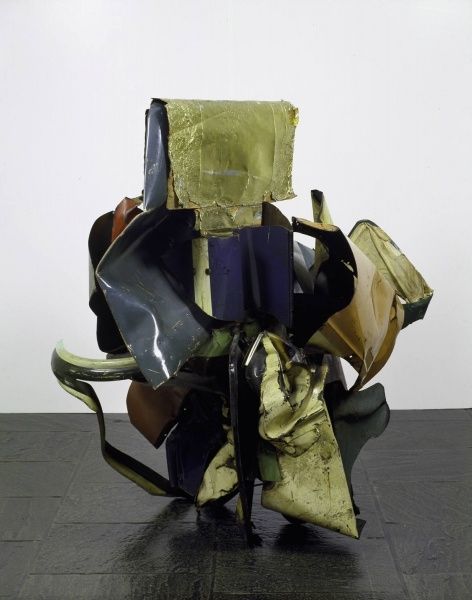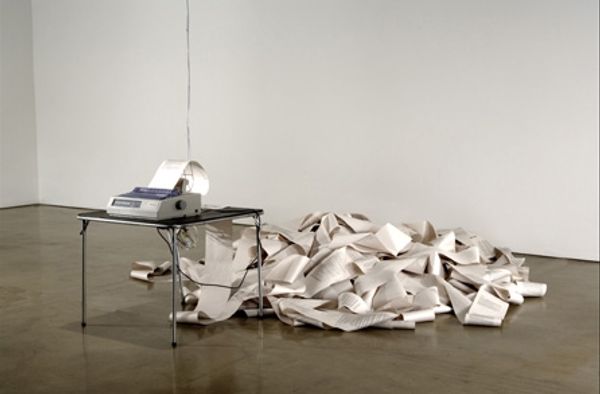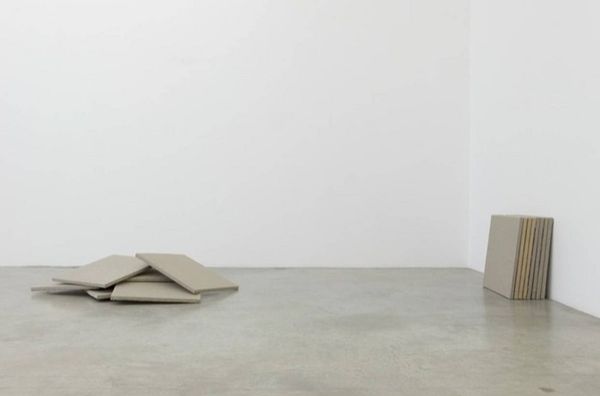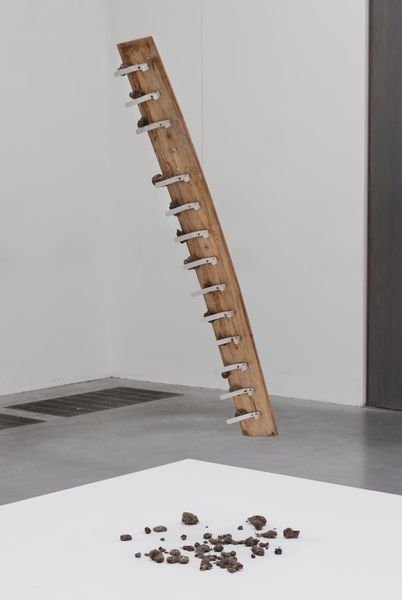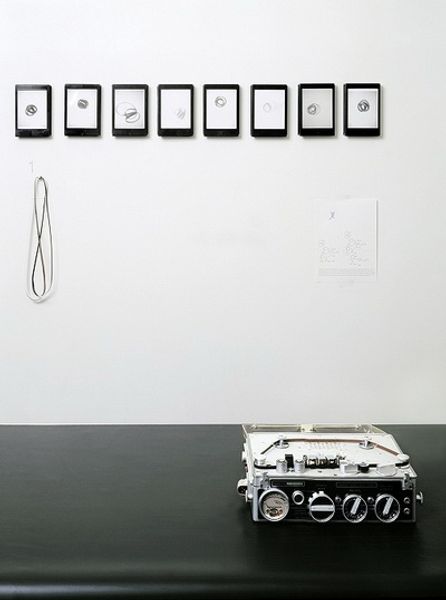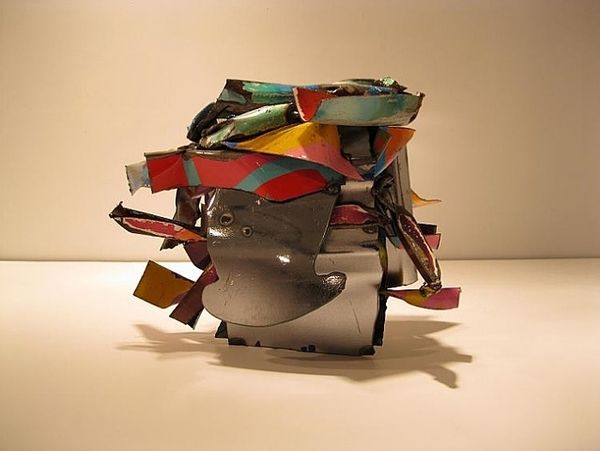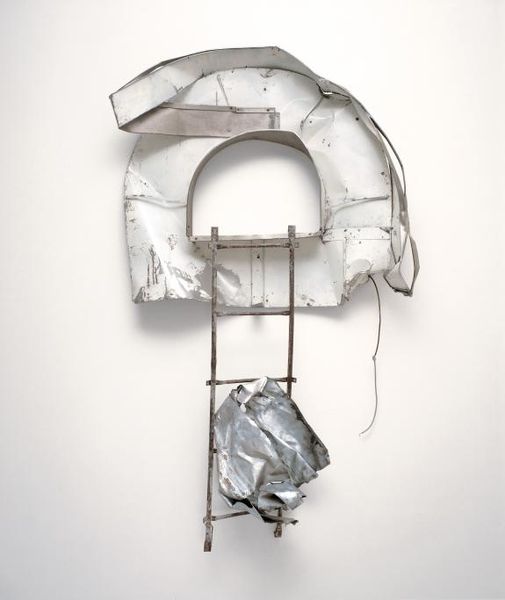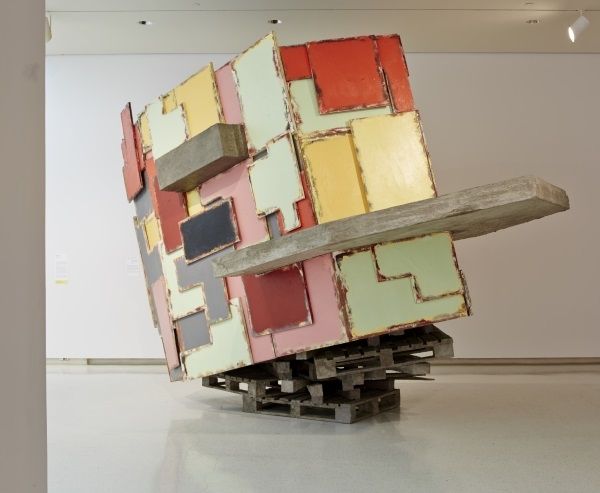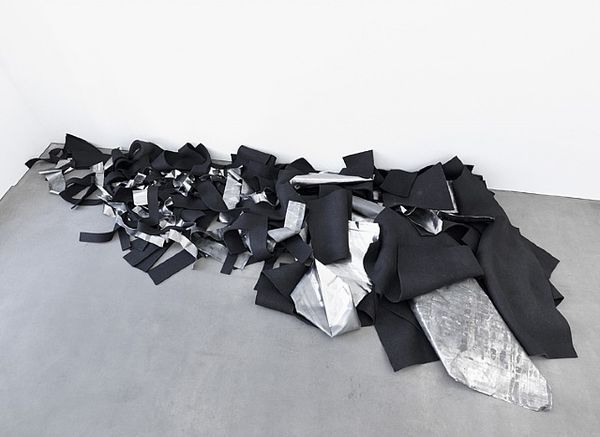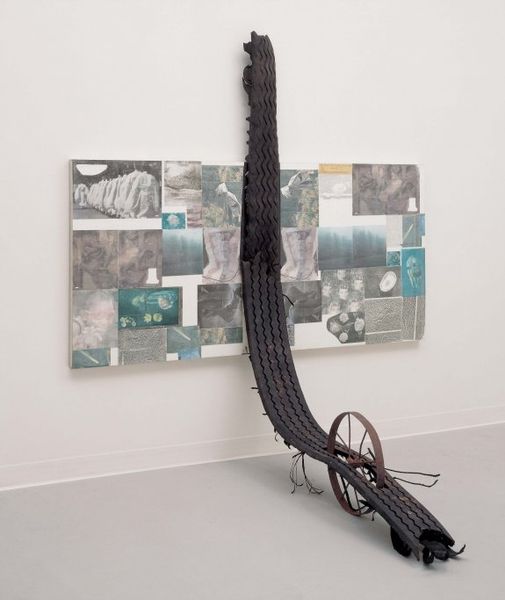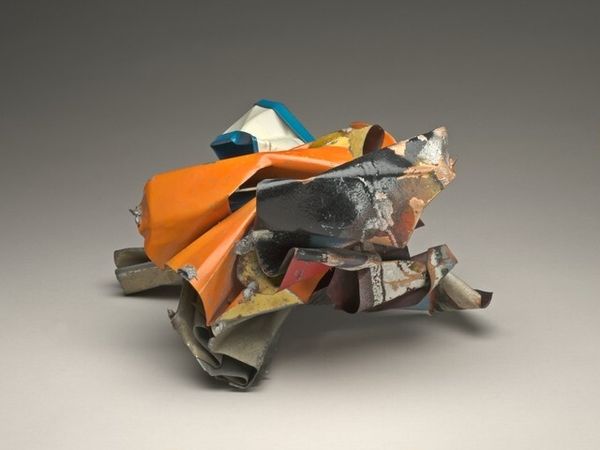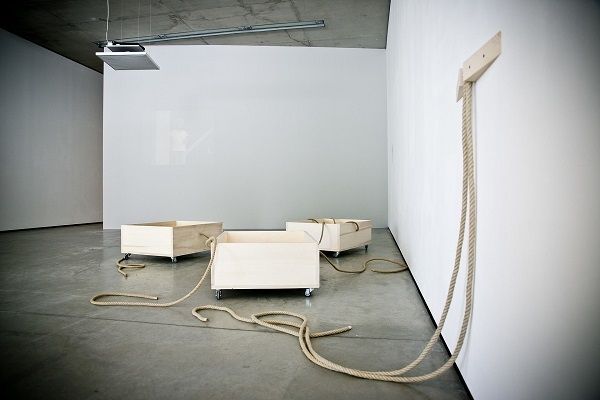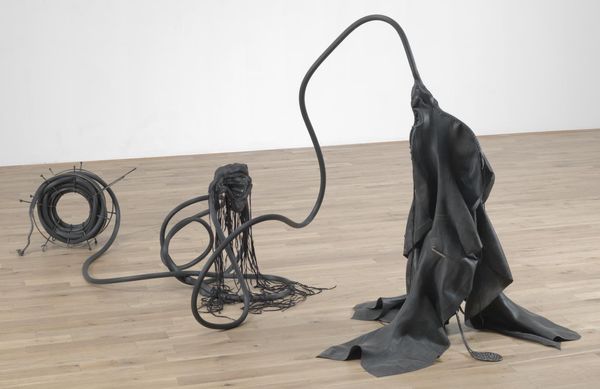
Copyright: Danh Vō,Fair Use
Curator: Before us is "Das Beste Oder Nichts," or "The Best or Nothing," a 2010 installation by Danh Vō, currently residing here at the Guggenheim. Editor: It's... stark. Just this hulking engine block sitting alone in this pristine gallery. It feels almost brutally direct, but also a little absurd. What's going on here? Curator: This engine is more than just a machine; it’s a relic. Specifically, it comes from the car of a man who held considerable power: the CEO of the ThyssenKrupp steel conglomerate. Editor: So, instantly we’re talking about industrial might, corporate power. I guess, Vō’s placing this emblem of capitalist luxury within the supposed neutrality of the art world to… what? Critique it? Unpack it? Curator: Perhaps both. He takes this powerful symbol and deflates its status, laying it bare on the floor. But it’s more than just critique; it’s about disrupting our understanding of these objects. This disembodied engine echoes images of violence and forced labour that supported such elite consumption. It encourages us to see the hidden narratives embedded in objects. Editor: Absolutely. The title, "The Best or Nothing," which of course, is a Mercedes-Benz slogan, is laced with irony here. Considering what we know about exploitative labour practices throughout history and to the present day. There is a haunting resonance of failed utopias in here. Curator: It does present as a memento mori. The engine stripped of its casing becomes a skeleton exposed to viewers in sterile settings that challenge us to unpack complex colonial and migratory power structures. Editor: So, stripping away the shiny veneer, the commodified image, to expose something much darker. It asks us to reflect on the labor, the resources, the social cost of this “best.” A rather blunt challenge that, the viewer simply can't unsee it. Curator: By re-contextualizing the engine block, Vō encourages a visual, mental and physical experience with these historical implications to reconsider its significance, in a psychological as well as societal frame of reference. It brings forth reflection that shapes understanding around symbols of power. Editor: And in that reframing, he makes visible those systems, those inequalities. It makes "The Best or Nothing" a provocative confrontation, urging us to question the price of luxury. Curator: Yes, indeed. By presenting us with decontextualized metal as sculptural statement, we recognize both individual human ambition and society's complex trajectory regarding our physical connection with objects of daily life. Editor: It really forces us to confront the weight of our own desires. Thanks for drawing out those connections.
Comments
No comments
Be the first to comment and join the conversation on the ultimate creative platform.

